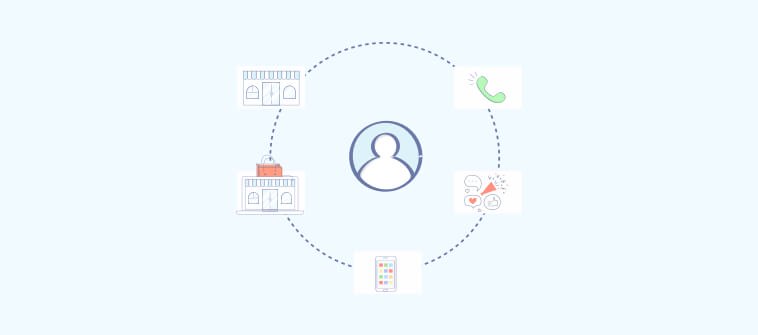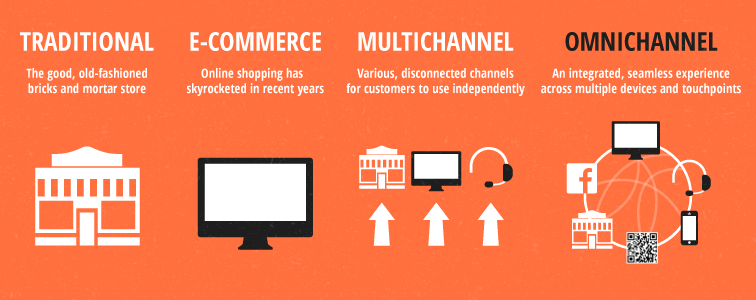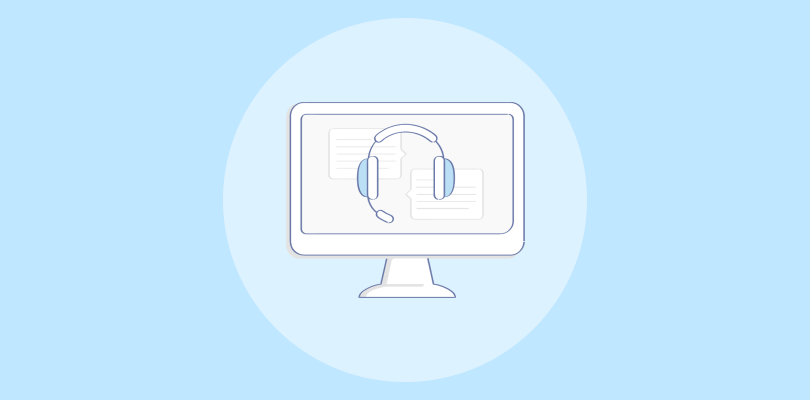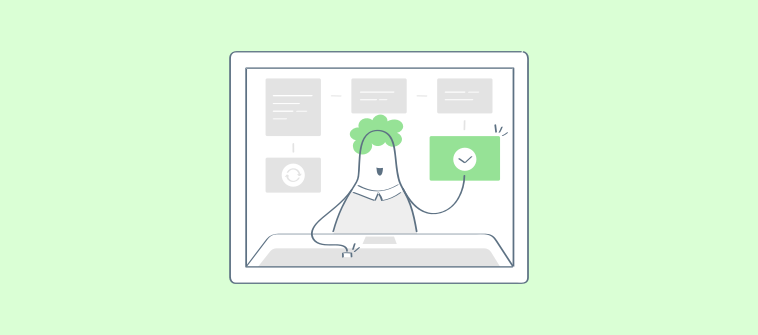
You have created a presence for your business on multiple channels, and have also invested in creating valuable content across all the channels.
But your customers are still unsatisfied. You don’t need to go bankrupt to give your customers an excellent experience. All you need is an Omni-channel experience.
Companies that have the strongest omnichannel customer engagement strategies have an average customer retention rate of 89%, compared to just 33% for companies with weak omnichannel strategies.
And this is more than enough to start thinking about an omnichannel experience approach.
While some people are comfortable buying online, some still do feel buying from a local store is the best.
And the only way you can satisfy them is by implementing the Omni-Channel experience.
In this blog post, I will explain:
- omnichannel experience,
- how to implement it in your business,
- along with examples of companies making the most of the ‘omnichannel experience’
Let’s get started.
What is an Omni-Channel Experience
The Omni-channel experience is a cross-channel content strategy that businesses use to improve their customer experience and build better relationships across all channels.
An Omni-Channel experience involves integrating all channels or points of contact together to provide a seamless experience for customers.
At every stage of the funnel, a customer is on a channel; they should be able to continue the process through another channel without any hassles.
That is what omnichannel experience is all about.
A good example is for a customer to order a product online through an ecommerce store and then walk into a local store to pick up the product.
Another one could be initiating an order on a company’s ecommerce site, walk into a store to make the payment, and then having your product delivered through a delivery service.
These two are perfect examples of implementing an omnichannel experience for your business.
What Omni-Channel Experience isn’t
-
Omni-Channel Experience isn’t the same as Multi-Channel
The difference between omnichannel and multi-channel is integration. Omni-channel has a high-level of integration across all channels while multi-channel is more like a standalone.
Multi-channel has always been the old strategy most businesses are used to. But the truth is multi-channel is not as effective as omnichannel.
Both multi-channel and omnichannel strategy is similar but the difference among them can bring a huge change to your business if done properly.

Image source: snapretail.com
Though they are alike, omnichannel is not the same as multi-channel.
In the real sense, multi-channel is having your presence on all possible channels for communication without integration across all channels.
You can have an ecommerce store and a physical store with no integration across them.
Here is what I mean.
A company running a discount on its ecommerce site for its customers but not offering the same discount in their local store.
This is not an omnichannel experience for customers, it is a multi-channel. You have only been able to create a presence on multiple channels with no integration across them.
-
Omni-Channel isn’t the same as Omni-digital
Omni-channel and Omni-digital are very similar, and they can be misunderstood easily. A lot of content marketers often mix it up.
A simple way of understanding the difference between omnichannel and Omni-digital is that omnichannel integrates all forms of channels including digital and non-digital (physical contact) to provide a seamless customer experience to their customers.
Omni-digital, on the other hand, integrates a lot of digital channels and digital tools to provide a delightful customer experience for its customers.
The Omni-digital strategy revolves mainly around digital channels, while omnichannel covers all possible channels that their customers are on to provide a seamless experience.
Recommended Read: 22 Customer Service Principles: The Secret to Delightful Customers
Why Do You Need to Create an Omni-Channel Experience
Having said a lot about the omnichannel experience, you would have had a good insight concerning why you need to create an omnichannel experience.
That said, there are still a few reasons to highlight why you do need to create an omnichannel experience.
-
To provide a seamless experience for your customers
According to a Walker study, customer experience will overtake pricing and product as the key brand differentiator. So if you are not implementing an omnichannel experience for your company, you will only risk losing your customers.
If they find out your competitor is giving them more flexibility, they would leave and flip to your competitors without thinking twice.
So, before you are the only one left, it’s better to put everything in place to deliver improved customer experiences.
-
For effective branding
Branding cannot be left behind when you have business growth on your mind. A symbol that you are growing is when you have successfully built an effective branding that depicts what you do and how you do it.
Your branding should speak for and help your target audience differentiate you from the other players in the market.
You get the point. And this is why you need to implement an omnichannel experience strategy. And this ensures that regardless of the channel, your customers get the same quality experience as any other channel.
Eventually, they will get used to what your brand stands for after getting a consistent experience whenever they interact with your brand.
How to Create an Omni-Channel Experience for Your Business
-
Create a presence for your Business on all channels your customers use
The first step in creating an omnichannel strategy is to create a presence across all your customers’ channels. Creating a presence on all the channels includes creating a website, Facebook page, Twitter, LinkedIn, etc.
Take out your time building a presence for business on all channels your customers use.
-
Focus more on customer experience, not channel
You have taken your time to build a presence on all channels. The next thing is to focus more on customer experience and less on channels.
The channel is not the real focus; your focus should be to provide the same quality customer experience regardless of the channel.
At every stage of the buying process and channel, personalize it enough to offer more flexibility to your customers. Let them be the driver, and at every point or channel, let everything be personalized for better customer experience.
-
Create a Seamless Experience on Mobile
A lot of customers use mobile more for surfing the internet and placing an order. If you are not optimizing your business for a seamless experience on mobile, then you are simply leaving money on the table for someone else to grab.
To create a seamless experience on mobile starts with developing a mobile-optimized site with a good user interface to integrating a live chat on your website.
Recommended Read: 4 Reasons Why You Should Implement Live Chat on Your Website Now
-
Integrate all Channels Together
According to research, 98% of Americans switch between devices on the same day. Customers now want the flexibility of starting a process on a laptop and then completing on their mobile phone.
If you are not giving them the flexibility to switch between devices without having to start all over again, then be ready to face the consequences (which could be losing more customers or much worse).
But there is a solution to this. And it is INTEGRATION.
By integrating all channels together, customers will be able to pick up from where they stopped on a channel and continue on another channel regardless of the device.
Integration is the most important step you should not exclude. If there is no integration then there is no omnichannel, as simple as that.
-
Engage with Customers across all Channels
Having successfully integrated all channels together, you now need to engage your customers across all channels.
There is a need to engage your customers to foster a better relationship with them.
Customers are more likely to buy from brands they resonate with and follow on social media.
While engaging with your customers involves creating content on your channels which is time-consuming, it helps you know what your customers need.
Tools to Help You Effectively Create an Omni-Channel Experience
-
PropProfs’ Help Desk
This robust help desk tool lets you merge all your customer-facing email accounts into a single platform. You no longer need to switch between multiple accounts back and forth.
Moreover, the ProProfs’ help desk tool allows you to effortlessly integrate their other tools such as Live Chat and Knowledge Base to strengthen your support process.
-
SurveyAnyPlace
SurveyAnyPlace is a good software for surveying your customers to know what they want. It offers you a user-friendly interface for creating and sharing questionnaires.
-
UserPilot
UserPilot is a software that focuses on improving user onboarding. With UserPilot you can ascertain that your product is truly built with the users in mind.
Examples of Companies using Omni-Channel Experience
-
Disney
Disney does this right. It offers a splendid customer experience even from the mobile view of its entertainment website. The homepage of the Disney website shows perfect segmentation to serve the right content to the right audience.
While Disney has a general site, it also has a site for each country to provide content based on the audience. This is a good way of providing an omnichannel experience.
And proof that this is working is the increase in their annual revenue in 2019.
-
Starbucks
Starbucks has one of the best omnichannel experiences out there with real-time synchronization. With the Starbucks reward apps, you get a free reward that you can use whenever or wherever on any of their channels.
And Starbucks also makes it possible to check and reload your card through phone, app, website, or in-store with real-time synchronization. This is very uncommon and makes Starbucks unique.
-
Pepperfry
Pepperfry is a home furnishing company that is based in India. Pepperfry uses an omnichannel experience to improve their sales and customer experience.
Pepperfry gives customers the flexibility of looking up a product online through their ecommerce store and then visiting any of the studio Pepperfry (Retail stores) to see the product. On the visit, Pepperfry has a design consultant to guide customers in choosing suitable furniture.
The customer can either make payment in the studio or go back home to order the product online. The customer is in complete control at every stage of the process.
Omni-Channel as The Way Forward
Creating a better customer experience has moved from being optional to a necessity for businesses looking to survive in this fast-changing digital world.
It all started from an online journal type of marketing to a well more sophisticated ecommerce site with real-life synchronization, and all of this is for better customer experience.
Putting it all together, to create an omnichannel experience you need to focus more on the integration of channels together.
Your Turn
How would you be integrating the omnichannel experience into your business?
There are a lot of success stories pertaining to offering an omnichannel experience other than the ones I mentioned.
The main message is to let you know you can implement this proven strategy for your business.
Leave a comment below and enlighten us on how you are using an omnichannel experience for your business or how you are planning to do it.
FREE. All Features. FOREVER!
Try our Forever FREE account with all premium features!







